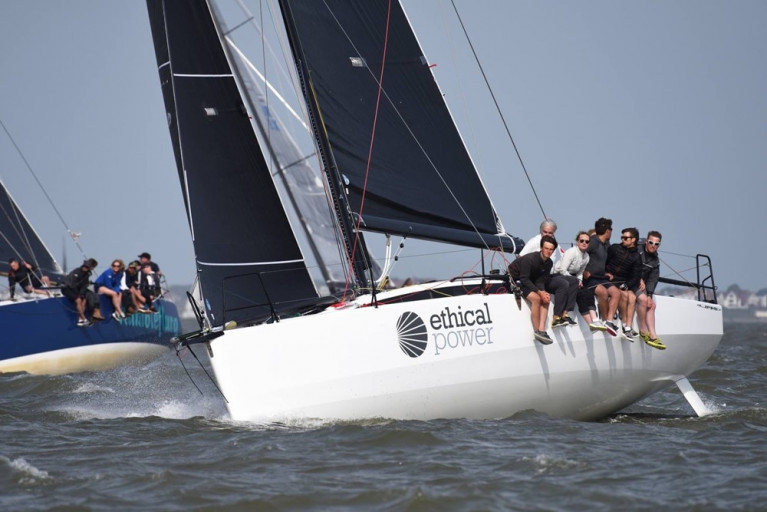If you’re not having unusually colourful dreams in these weird times, then you’re the exception. Everyone else is. I woke up the other morning totally exhausted, and little wonder. For as the foggy mind came into focus, all recollections were of the night’s vivid and busy excursion into the subconscious world of believable fantasy, in which I’d somehow been recruited into making some sort of advisory suggestions for a GAA project to send a boat and crew in the SSE Renewables Round Ireland Race from Wicklow.
The biennial race is now Lockdown-postponed from its usual start around Mid-summer’s Day to August 22nd. But with any luck, it’s still a runner for whatever can be salvaged from the 2020 season, and there’s certainly plenty of time to put new crews and challenges together, including at least one totally GAA squad.
For our Afloat.ie visitors from far beyond the seas - who are surprisingly many, and you’re welcome aboard - the GAA is the Gaelic Athletic Association, that quintessentially Irish body which was formed in 1884 to encourage the traditional native games such as hurling at a time when strange imports - like soccer, rugby, cricket and hockey - were becoming increasingly codified in a way which facilitated their expansion to threaten the continuation of the ancient and often bone-crunching field sports of the Gael.
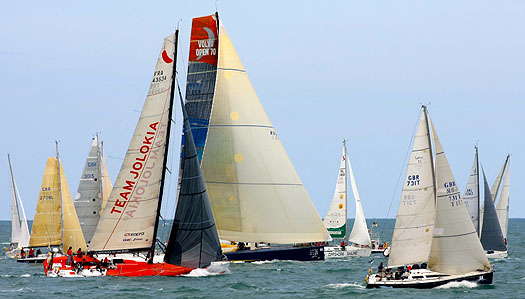 The start of the biennial Round Ireland Race is a celebration of Ireland, and a real mixum-gatherum of boats. This is the race of 2014 getting underway – line honours were taken by the Volvo 70 Monster Project (centre, David Ryan, Wicklow SC) while the overall winner was the Scottish Sydney 36 Tanit (right)
The start of the biennial Round Ireland Race is a celebration of Ireland, and a real mixum-gatherum of boats. This is the race of 2014 getting underway – line honours were taken by the Volvo 70 Monster Project (centre, David Ryan, Wicklow SC) while the overall winner was the Scottish Sydney 36 Tanit (right)
In their early days, they included athletics of all kinds, but after 1922 it was the team events they concentrated on. In that context, the GAA was always going to be popular, as it has an inbuilt USP. An Irish team always wins. For a country struggling to find itself, this was a comfortably reassuring factor when much that was Irish was being denigrated and destroyed.
But now that Ireland has in many ways found herself, don’t think for a moment that the GAA is seen as superfluous to requirements. On the contrary, in many areas it is more than ever the backbone of the community and culture, its remit extending far beyond its large and wide-ranging team sports programme to cover all sorts of voluntarily-given services and support, such that it has been playing a very important social back-up role in the current crisis.
Yet partly because the GAA’s emphasis in all its main sport tends towards the summer, with the highlights being reached in a blaze of finals in September, there has never been any official GAA presence in sailing, even though many individual Gaelic players are no strangers to boats and racing. You could, of course, say the same about rugby. But the Irish Rugby Football Union is essentially a sporting body, whereas the GAA’s broad cultural and community ethos is something which puts it in a league of its own.
And it has hundreds of thousands of members both in Ireland and throughout the diaspora, so much so that it’s reckoned to be around half a million in all, give or take a few thousand. So when the GAA puts its imprimatur on something, we’re talking mega-support, and it seemed to me in my dream-beset state that a sailing race round Ireland should have long since had the support of the GAA, particularly in the Covid-19 circumstances where some sailing events may well be re-started before field sports are allowed, leaving GAA players on the search for alternative projects.
But the dream had all the makings of becoming a nightmare, as I last sailed a Round Ireland as co-skipper in our own boat way back in 1994 when - after being becalmed within a stone’s throw of the finish at Wicklow for 25 minutes - we missed the class win by 17 minutes to Michael Horgan and his future son-in-law Peter Ryan (now ISORA Chairman) with the Club Shamrock Emircedes, despite which we remained the best of friends.
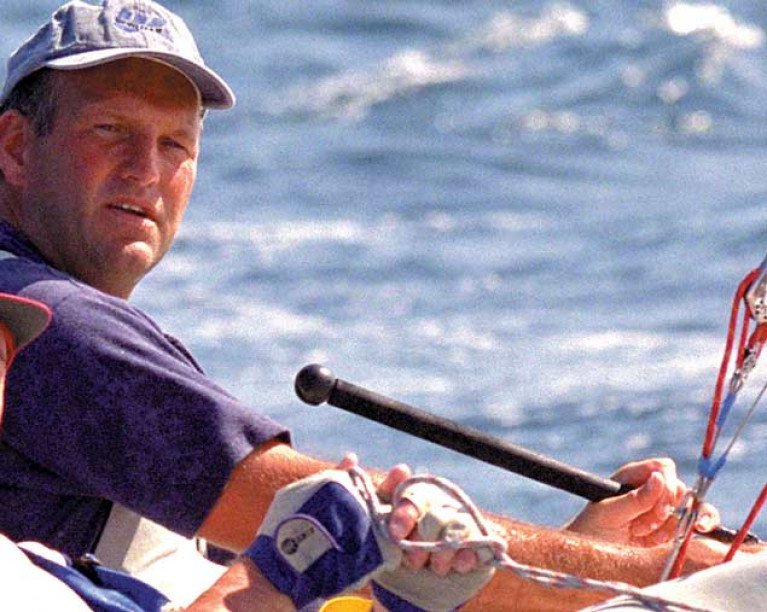 Mark Mansfield - with four sailing Olympics, All-Ireland Helmsman’s Championships, Round Ireland Class wins and many other successful campaigns and crew-coaching programmes in his sailing CV, he would be an ideal adviser to the GAA’s first round Ireland campaign
Mark Mansfield - with four sailing Olympics, All-Ireland Helmsman’s Championships, Round Ireland Class wins and many other successful campaigns and crew-coaching programmes in his sailing CV, he would be an ideal adviser to the GAA’s first round Ireland campaign
Be that as it may, in Dreamsville this week we were definitely verging into nightmare territory, as I was being swamped by memories of just what an effort it is to get a boat and crew sorted for round Ireland participation. But miraculously things took a turn for the better, as the good old subconscious somehow decided to get me to direct the GAA’s would-be matelots to Mark Mansfield and Commandant Barry Byrne, who between them tick just about all the boxes for giving worthwhile advice for newcomers to round Ireland participation.
So with a mighty leap, our hero freed himself, and the GAA were productively getting together with Mark and Barry, even if by this time the sun was up and we awoke to that feeling of total exhaustion which is all that’s left after a busy night down the dream mines.
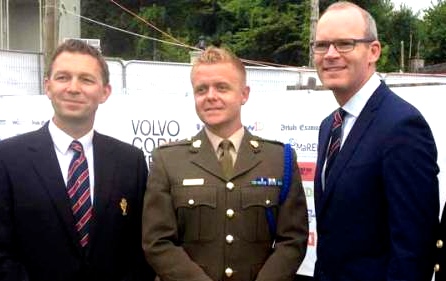 Commandant Barry Byrne (centre) with Gavin Deane (General Manager, Royal Cork YC, left) and Tanaiste Simon Coveney TD at the launching of the new Beaufort Trophy for Inter Services Competition in Cork Week. The concept for the Beaufort Trophy was originally proposed by Simon Coveney himself, and this launching was at Naval HQ in Haulbowline Island in the Spring of 2016, while Barry Byrne as skipper of the Defence Force crew was to win the trophy in 2016 and retain it in 2018
Commandant Barry Byrne (centre) with Gavin Deane (General Manager, Royal Cork YC, left) and Tanaiste Simon Coveney TD at the launching of the new Beaufort Trophy for Inter Services Competition in Cork Week. The concept for the Beaufort Trophy was originally proposed by Simon Coveney himself, and this launching was at Naval HQ in Haulbowline Island in the Spring of 2016, while Barry Byrne as skipper of the Defence Force crew was to win the trophy in 2016 and retain it in 2018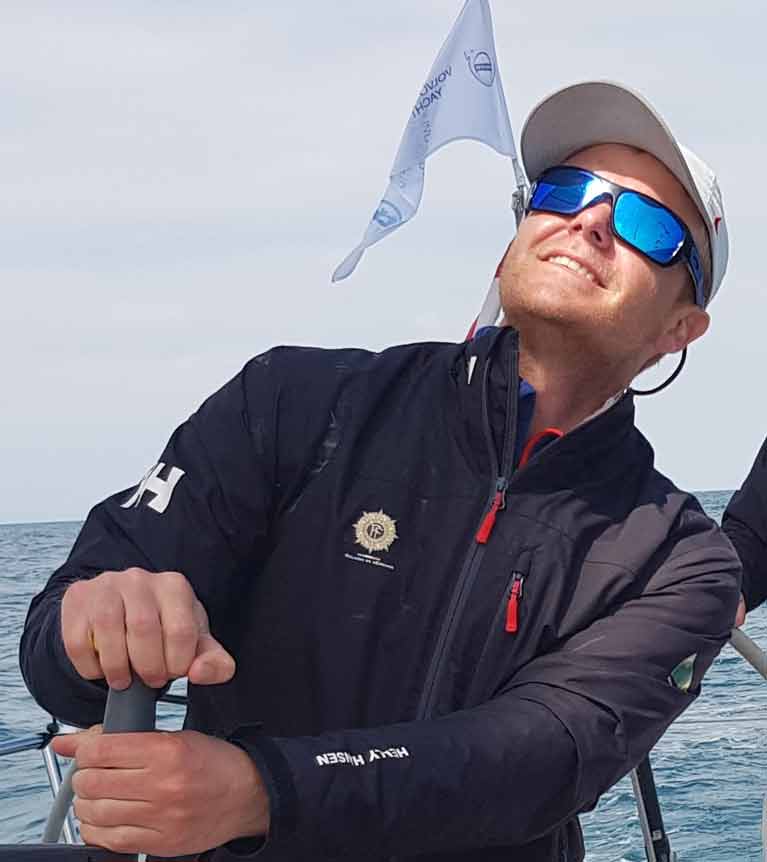 The Army goes sailing – Barry Byrne trimming the sheets in the final stages of the 2018 Round Ireland Race, in which he and his Defence Forces crew with the J/109 Joker 2 came second overall and won their class
The Army goes sailing – Barry Byrne trimming the sheets in the final stages of the 2018 Round Ireland Race, in which he and his Defence Forces crew with the J/109 Joker 2 came second overall and won their class
But after such a total subconscious experience, you assume that all the other significant role-players in the dream are well aware of what they’re supposed to be doing, so there has been no need to inform Mark Mansfield, Barry Byrne and the GAA that they’re all going to be getting together pronto to organise a Gaelic sports challenge in the Round Ireland Race, while we confidently look forward to receiving an announcement from GAA headquarters in Croke Park in due course.
Proper dreams do that to you. That said, the word is that approaches to local GAA clubs for any sort of introductory relationship with sailing have produced little in the way of positive results, for as Eddie English of SailCork in Cobh puts it: “They’re fiercely protective of their own people and their own sports and their own way of doing things.”
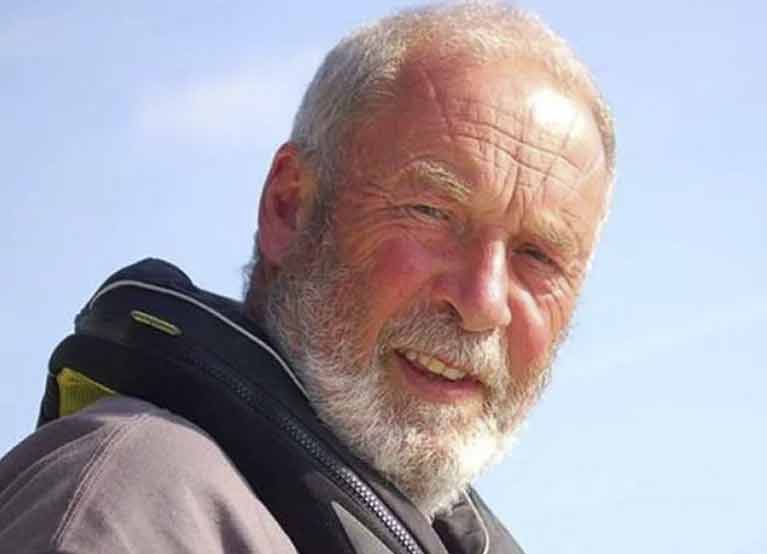 A shrewd observer of the south coast sailing scene and a pioneer of teaching sailing - Eddie English of SailCork in Cobh
A shrewd observer of the south coast sailing scene and a pioneer of teaching sailing - Eddie English of SailCork in Cobh
Maybe so, but in Dun Laoghaire Harbour, the Irish National Sailing School’s Alistair Rumball, who reached out to the Naomh Olaf GAA Club in Sandyford because of his own special links with Vikings, reckons there’s a quiet revolution taking place.
“Originally when our training courses were taking place afloat, the kit bags left behind in the locker room would be spread between bags with school logos and bags with rugby club logos, with the occasional GAA presence. But for some time now, it’s been level pegging between rugby and the GAA on the logo front, and there’d be days in more recent years when the GAA total is ahead. Either way, the ultimate ideal from the parents’ point of view seems to be a programme of field sports in the morning, and sailing in the afternoon”.
With this developing vigour of the GAA and its local major presence in South Dublin with so many individual links to the INSS, a straightforward way of mounting a Gaelic sports challenge in the Round Ireland would be through a more formalized arrangement with the INSS though Round Ireland veteran Kenneth Rumball and one of the INSS offshore racers. But how well such a South Dublin-centric approach would play in a national organisation which prides itself on its all-Ireland nature is a moot point.
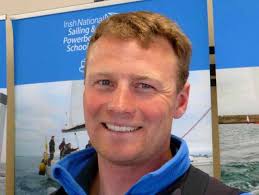 Kenneth Rumball of the Irish National Sailing School. The INSS is already experiencing a significant GAA presence on an individual basis among its pupils, and with Kenneth Rumball’s teaching and training experience and round Ireland track record, they could offer the GAA a very complete package. Photo: W M Nixon
Kenneth Rumball of the Irish National Sailing School. The INSS is already experiencing a significant GAA presence on an individual basis among its pupils, and with Kenneth Rumball’s teaching and training experience and round Ireland track record, they could offer the GAA a very complete package. Photo: W M Nixon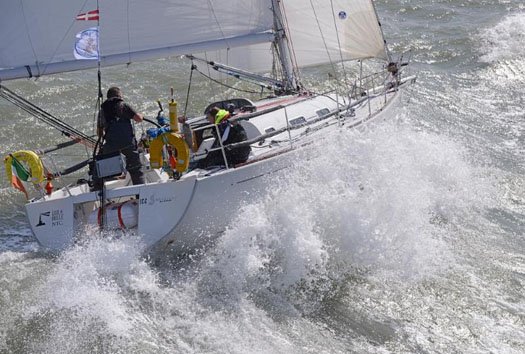 This is Irish sailing’s version of Senior Hurling. The First 36.7 Lula Belle – now part of the INSS fleet – heading off from the start of the stormy Round Britain and Ireland Race in 2014, sailed two-handed by Liam Coyne from Mayo and Brian Flahive from Wicklow. They won several major prizes in a very tough race. Photo: Rick Tomlinson
This is Irish sailing’s version of Senior Hurling. The First 36.7 Lula Belle – now part of the INSS fleet – heading off from the start of the stormy Round Britain and Ireland Race in 2014, sailed two-handed by Liam Coyne from Mayo and Brian Flahive from Wicklow. They won several major prizes in a very tough race. Photo: Rick Tomlinson
Across Dublin Bay in Howth, the GAA is very big and positive in the village, and Christina Knowles of Howth YC says that the club’s Quest Sailing School had seen a good take-up on its Irish module in the Sailing through Languages courses for the coming summer, but for now the Covid-19 lockdown has put all that on hold.
Nevertheless, it’s further evidence that individual members of the GAA are into sailing, and it’s a welcome graph which is going steadily upwards even if GAA traditionalists are wary of involvement with any sport in which they don’t have control.
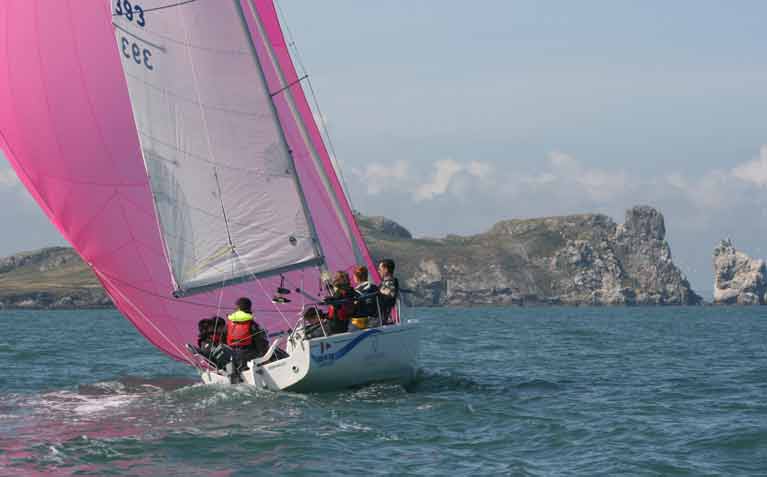 Howth YC’s Quest Sailing School provides “Sailing through Languages” courses in its J/80s, and until the Lockdown, there’d been strong bookings for its Sailing through Irish module this summer. Photo: Brian McDowell
Howth YC’s Quest Sailing School provides “Sailing through Languages” courses in its J/80s, and until the Lockdown, there’d been strong bookings for its Sailing through Irish module this summer. Photo: Brian McDowell
Even that could be addressed through revealing ancient links, as some sailing historians would argue that the earliest enthusiastically recreational sailor in Ireland was Hugh Maguire of Fermanagh, who was taking sport with boats on Lough Erne at much the same time as Grace O’Malley was getting the best speed out of boats for more mercenary purposes off the coast of Connacht.
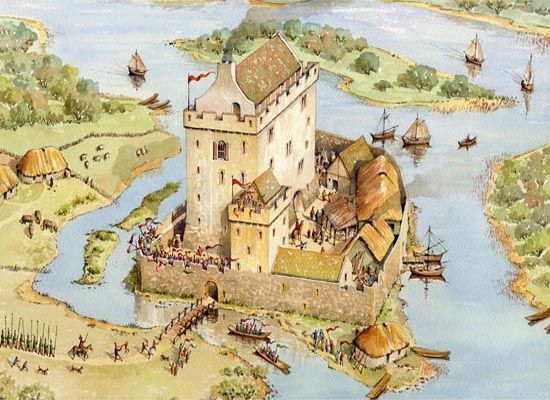 The ideal home base for a pioneering recreational sailor – Enniskillen Castle in the midst of Lough Erne as it was in 1595, when it was the stronghold of Hugh Maguire.
The ideal home base for a pioneering recreational sailor – Enniskillen Castle in the midst of Lough Erne as it was in 1595, when it was the stronghold of Hugh Maguire.
And of course, the Holy Grail of GAA sport is the Sam Maguire Cup, so maybe we could complete the circle by persuading Gordon Maguire to come home from Australia to skipper the first GAA entry in the Round Ireland Race.
Certainly, the aura around the Sam Maguire is something very special, as I discovered very many years ago back in 1968 when we were making an October cruise on Strangford Lough, and on Friday night had found our way into Strangford village and the welcome embrace of Brendan Sharvin’s pub.
For some reason there was a special air of excitement about the village, but the night was well advanced when we found out why. The Down GAA team had won the Sam Maguire at the All-Ireland the previous weekend, and in a leisurely victory tour of their heartlands with the trophy (or an exact replica, for I still can’t believe it was the real Sam Maguire I held on that extraordinary night) Sharvin’s of Strangford was to be one of their key stops.
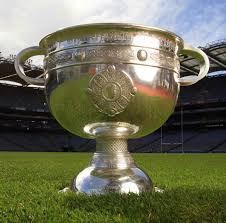 Holy Grail of the GAA – the Sam Maguire Cup
Holy Grail of the GAA – the Sam Maguire Cup
For someone whose childhood had been on the decidedly non-GAA southern shore of Belfast Lough, it was a glimpse of another world, and a very different world it was too, for all that it was only thirty miles south of Ballyholme Bay. Yet here we are now, with the Round Ireland race a pillar of the Irish sailing programme for forty years, and the GAA a young-family-oriented organisation of such vigour that many people think it would be to everyone’s mutual benefit if they’d a proper entry in the Round Ireland Race.
Ideally, they’d go for an Irish-built boat, and in better times Denis Doyle’s Moonduster would have been just the job, as she’d shown herself suitable for an element of sail training when The Doyler got together with Colonel Barney Goulding of the Defence Forces to beef up Moonduster’s crew with army cadets. But unless some very generous philanthropist comes up with an enormous donation to rescue Moonduster from her semi-mummification in Norway, the sensible thing is to choose a builder of competitive boats in some location with impeccable Gaelic/Celtic links, and no port is more proudly Celtic than Lorient in Brittany.
There, the city fathers were so determined to develop their local marine industry with quality products that they offered up-and-coming boatbuilder Jean Pierre Kelbert ideal premises at a very attractive cost, and ever since the increasingly highly-regarded JPK range has been totally associated with Lorient and its proud Celtic links.
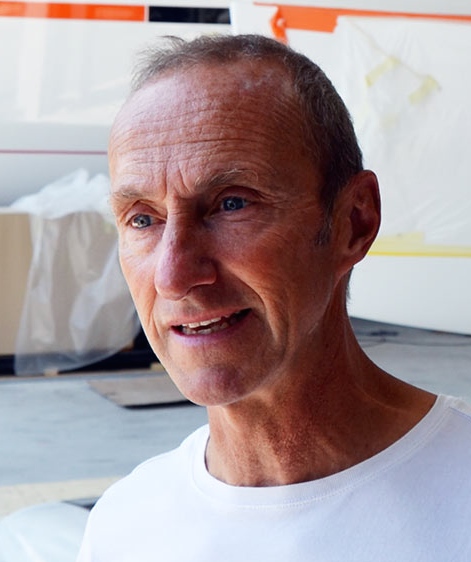 Boatbuilding superman – Jean Pierre Kelbert in his workshops in Lorient. He can take in offshore racing with success as well – in 2019 he won his class sailing two-handed in the Fastnet with the new JPK 10.30
Boatbuilding superman – Jean Pierre Kelbert in his workshops in Lorient. He can take in offshore racing with success as well – in 2019 he won his class sailing two-handed in the Fastnet with the new JPK 10.30
So if the GAA is on the lookout for an appropriate boat to take on the round Ireland challenge, they could do no better than one of the handy JPK 11.80s, which have been following their successful smaller sisters into a continuing litany of sailing success. For as Sailor of the Year Paul O’Higgins with his Boat of the Year, the JPK 10.80 Rockabill VI, has remarked, they’re all superbly built, you feel safe aboard a JPK in weather when other boats might be squeaking and leaking, and you’d confidently recommend them to anyone for racing hard along the west coast.
Racing under sail along Ireland’s western seaboard when there’s some real Atlantic weather around is definitely Senior Hurling. But ashore, the GAA sets the pace, as we learn from the fate of the true birthplace of modern Irish recreational sailing, at Rostellan in the eastern corner of Cork Harbour.
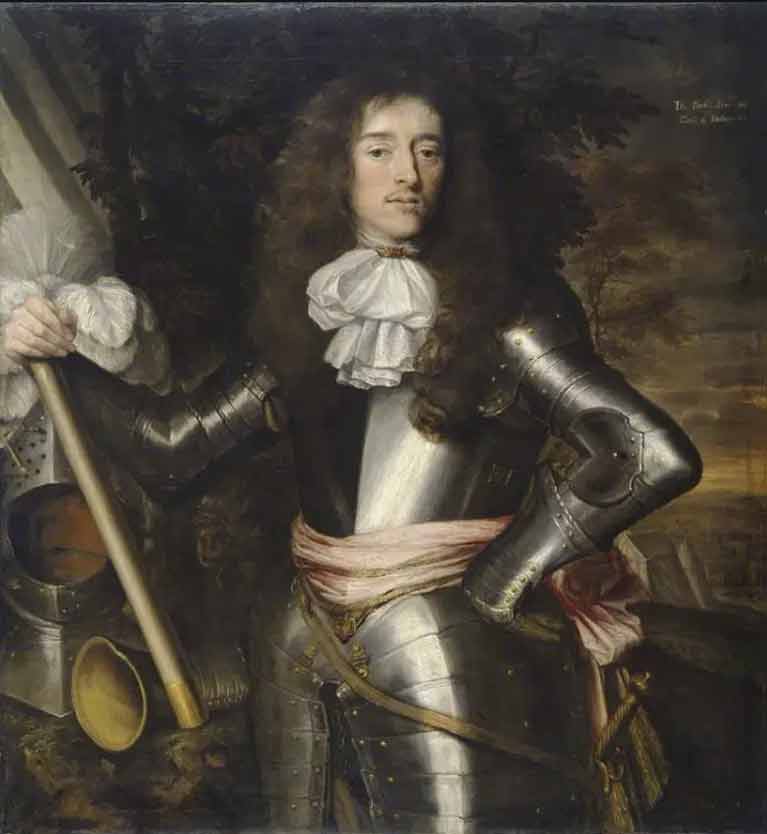 Murrough O’Brien (1616-1674) was an Irish recreational sailing pioneer who spent his last years at Rostellan as 1st Earl of Inchiquin. This was after a decidedly colourful career in which looking after Number One was always top of the agenda, and had somehow included seven years as the French-appointed Governor of Catalonia in Spain
Murrough O’Brien (1616-1674) was an Irish recreational sailing pioneer who spent his last years at Rostellan as 1st Earl of Inchiquin. This was after a decidedly colourful career in which looking after Number One was always top of the agenda, and had somehow included seven years as the French-appointed Governor of Catalonia in Spain
Back in 1660 or thereabouts, Rostellan Castle was the home of that old rogue Murrough O’Brien, a crony of Charles II who had ruthlessly changed sides for his own survival and benefit during the Irish wars of the first half of the century. And it was his descendants, the Earls of Inchiquin, who were to provide the lead for the new Water Club of the Harbour of Cork in 1720, keeping their own yacht beside the quay at Rostellan.
But it was Murrough who had brought recreational sailing to the harbour fifty and more years earlier, having been introduced to it while sharing the final years of Charles II’s exile in The Netherlands before his restoration as King in London in 1660. Yet in the way of these things, Rostellan Castle – having become Rostellan House - was finally demolished in 1938. And today – as Eddie English delights in pointing out - its levelled site is the precise location of the playing fields of Aghada GAA Club……
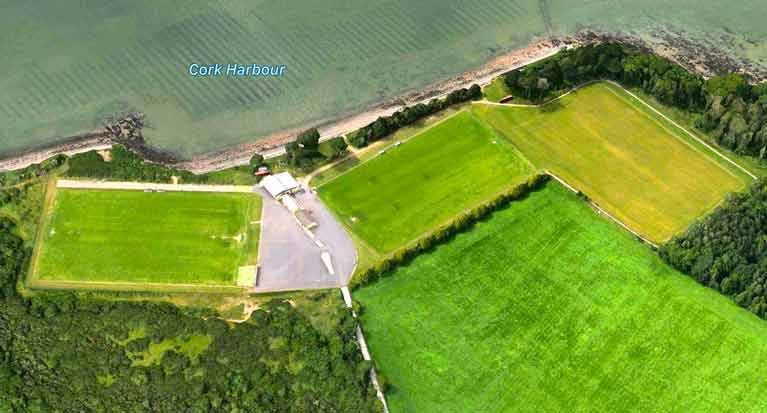 Is this the actual place “Where It All Began”? The playing fields and clubhouse of Aghada GAA Club are located on the former site of Rostellan House
Is this the actual place “Where It All Began”? The playing fields and clubhouse of Aghada GAA Club are located on the former site of Rostellan House



























